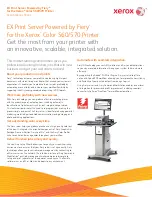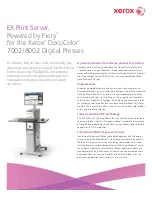
T e m p u s L X G P S U s e r M a n u a l
74
A P P E N D I X D
75
T e m p u s L X G P S U s e r M a n u a l
G P S R E F E R E N C E P O S I T I O N
surface of the WGS-84 ellipsoid is called the
geoid height
or
separation
and has been determined by
literally millions of gravitational measurements performed over its entire surface. Due to variations
in the distribution of mass concentration of the earth, the geoid height varies over a range of about
100 meters. The simplicity of the ellipsoid model cannot describe these fluctuations, so the precise,
survey-quality description of the geoid height is contained in a very large data base. This database
can be accessed via a utility called GEOID99 that is freely available from the NGS/NOAA website.
Over most of North America, the geoid height is
negative
which means that it lies
below
the surface
of the WGS-84 ellipsoid.
The height above the ellipsoid of a point P is called the ellipsoidal height,
h
of P. The height above
the geoid of a point P is called the orthometric height,
H
. The orthometric height is also commonly
known as the height above mean sea level. The geoid height at point P is referred to as
N
.
h
,
H
and
N
are related using this equation:
h
=
H
+
N.
A wealth of information on this subject, as well as conversion programs and databases are available
at the National Geodetic Survey/National Oceanic and Atmospheric Administration and the National
Imagery and Mapping Agency (formerly the Defense Mapping Agency) websites:
http://earth-info.nga.mil/GandG/coordsys/csat_pubs.html
WGS-84 Positions:
Internally, GPS receivers perform all of their range measurement calculations
using receiver and satellite positions that are kept in a Cartesian, XYZ coordinate system. The center
of the earth, as modeled by the WGS-84 ellipsoid, is the origin for the coordinates. The X-axis lies in
the equatorial plane and intersects the 0° or Greenwich meridian. The Y-axis also lies in the equato-
rial plane and intersects the 90° east meridian. The Z-axis is perpendicular to the equatorial plane
and is the polar axis. The WGS-84 ellipsoid is simple to describe mathematically and facilitates the
calculations that take place in a GPS receiver to convert Cartesian XYZ coordinates to latitude, longi-
tude and height above the WGS-84 ellipsoid.
However, for a lot of reasons WGS-84 is not the geodetic datum that has been universally used by
mapmakers and surveyers. That means that to use positions generated by a GPS receiver to find a
location on a map, a conversion between the GPS WGS-84 position and the geodetic datum used for
making the map must be performed. Sometimes the differences are small, as in using a localized
datum known as the North American Datum of 1983 (NAD-83). The positional differences between
WGS-84 and NAD-83 are only at the one meter level, so for our purposes you can use NAD-83 and
WGS-84 interchangeably. The older North American Datum of 1927 (NAD-27) exhibits much larger
differences, mostly in the longitude, that can exceed 100 meters. Many maps and survey benchmarks
exist that were created using this datum.
Procedure:
Access a mapping database, of which there are several on the Internet, that will convert
a street address and zipcode to latitude and longitude. In general, the datum for the latitude and lon-
gitude will not be WGS-84. In the United States it will likely be NAD-27. If so, you must convert
this to NAD-83 using a utility called NADCON that is freely downloadable from the NGS/NOAA
website. NAD-83 is sufficiently close to WGS-84 that we can use coordinates from either geodetic
datum interchangeably.
Having the horizontal position coordinates, you now need to determine a height above the WGS-
84 ellipsoid for your location. To do that, you need to find a survey benchmark near your location
Summary of Contents for Tempus LX GPS
Page 1: ...Smarter Timing Solutions Tempus LX GPS Network Time Server User Manual...
Page 2: ......
Page 6: ...Te m p u s L X G P S U s e r M a n u a l...
Page 36: ...Te m p u s L X G P S U s e r M a n u a l 24 C H A P T E R T H R E E...
Page 84: ...Te m p u s L X G P S U s e r M a n u a l 72 A P P E N D I X C...
Page 90: ...Te m p u s L X G P S U s e r M a n u a l 78 A P P E N D I X E...
Page 107: ...95 Te m p u s L X G P S U s e r M a n u a l S P E C I F I C AT I O N S...
Page 108: ...Te m p u s L X G P S U s e r M a n u a l 96 A P P E N D I X H...
Page 112: ...Te m p u s L X G P S U s e r M a n u a l 100 A P P E N D I X I...
Page 114: ...Te m p u s L X G P S U s e r M a n u a l 102 S P E C I A L M O D I F I C AT I O N S...
Page 115: ......
















































